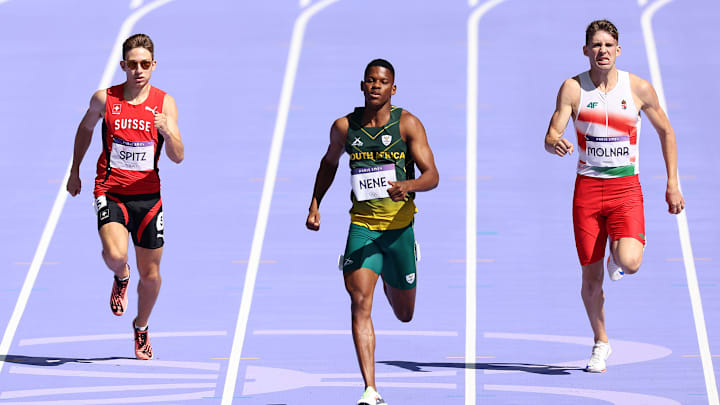No athletic event has benefited from advances in technology quite like the Olympic Games. Fencers use state-of-the-art sensors to make sure their attacks are properly recorded; underwater robot cameras capture swimming and diving events.
But runners and cyclists still sport some surprisingly low-tech assistance: they get a number on a piece of paper that's held in place with safety pins. What gives?
Technically, athletes wear what’s called a bib—a sheet of thin plastic Tyvek that withstands sweat and is able to move with the wearer’s body. According to Tyvek retailer Running Count, the product is also tear-proof, though whether they mean rips or actual salty discharge from a losing effort—or both—is uncertain.
Originally, the numbers printed on the bibs were used to identify entrants for judges, who are often tasked with keeping track of multiple competitors. But with the advent of computer chips and timers, it’s become less crucial to slap a number on an athlete. Bibs are now employed in timekeeping. Olympic track and field athletes wear bibs containing tracking chips that follow each runner's position down to the centimeter. They also record the exact time competitors cross the finish line in races where a hair's breadth may mean the difference between gold and silver—like in the men’s 100-meter final at the 2024 Paris Games, were American sprinter Noah Lyles edged out the Jamaican runner Kishane Thompson by five thousandths of a second.
The bibs also serve as corporate real estate for the athletes’ and Olympic sponsors. According to WIRED, the big squares on athletes’ torsos are prime spots for sponsor logos, who pay millions to be featured on the international telecasts.
While athletes don’t get to choose their bib number or its contents, they can still find significance in it. When gymnast Nadia Comaneci donated her bib to the Olympic Museum in Lausanne, Switzerland, in 2014, she noted that its number 73 reminded her of the number of perfect 10 scores she received (seven) and the number of gold medals earned (three).
Find the Answers to Your Summer Olympics Questions:
A version of this story was published in 2016; it has been updated for 2024.
